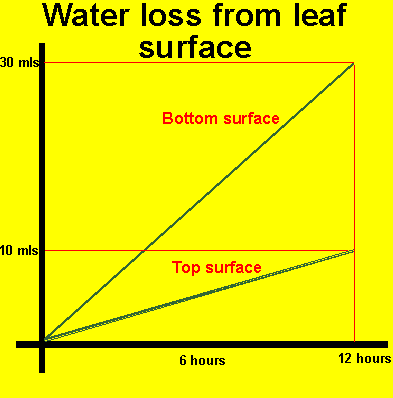Experimental technique
Controlled experiments
Density of stomata
Leaves have tiny holes called stomata through which gases are exchanged and water escapes. Stephen wanted to compare the density of these tiny holes on both the top and the bottom surfaces of the leaf of a particular gum tree.
Stephen put forward his hypothesis. "I think the top surface of the gum tree leaf will have less holes than the bottom surface. During a hot day a great number of holes on the top surface will cause severe water loss."
Stephen set out to test his hypothesis.
He set up the experiment as shown on the right. He took two identical cuttings from the same tree and placed them in test tubes filled with the same amount of water. To the water surface of each test tube he applied oil to stop any evaporation of water from the surface.
He applied vaseline gel(an oil based substance that blocks the stomata and prevents water from escaping) to the top surface of all the leaves of the first cutting. He then applied the vaseline gel to the bottom surface of the leaves of the second cutting.
He placed both test tubes in the same room next to a window that provided a steady breeze.
Observe the outcome on the right.
Is his hypothesis accurate?
What are the variables of this experiment?
Did Stephen control all but one of the variables?
Solution

An independent variable in this experiment is
The dependent variable in this experiment is
Stephen measured the water loss every hour and plotted his results on a graph (shown on the right).
Assuming that the bottom surface has 200 stomata calculate the number of stomata on the top surface.
Solution
